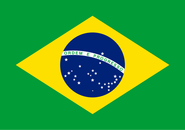Government/Policy

October 31, 2022
Brazilian Ambassador Seeks Removal of Section 232
Written by Laura Miller
The Brazilian ambassador to the US said it’s time for the removal of Section 232 tariffs and quotas in an editorial sent to the Wall Street Journal.
![]() The 232 tariffs and quotas have been in effect for more than four years – since 2018, when then-President Donald Trump imposed a 25% tariff on steel and a 10% tariff on aluminum in the name of national security. Some countries, Brazil is one example, agreed to a hard quota in exchange for an exemption to the 25% tariff on steel.
The 232 tariffs and quotas have been in effect for more than four years – since 2018, when then-President Donald Trump imposed a 25% tariff on steel and a 10% tariff on aluminum in the name of national security. Some countries, Brazil is one example, agreed to a hard quota in exchange for an exemption to the 25% tariff on steel.
Nestor Forster Jr., Brazilian ambassador to the US, wrote in an Oct. 30 WSJ op-ed that removal of Section 232 “would be an example of a win-win measure, with positive effects on production costs, gross domestic product and employment levels in the US and Brazil.”
Forster points out that Brazil is the second largest importer of met coal produced in the US and that nearly 85% of US imports of Brazilian steel are semifinished products going into the construction and auto industries. Removal of Section 232 is “long overdue,” he said.
Forster’s comments come in response to an op-ed published by WSJ’s Editorial Board just days before titled “Call Them the Biden-Trump Tariffs Now.”
Brazil’s hard quota on steel products for the 2022 year is approximately 4,622,164 tons with quarterly limits, according to US Customs and Border Control’s quota bulletins.
Year-to-date through Oct. 25, Brazil has sent just under 2.3 million short tons of steel products to the US, based on US government data. That figure includes September’s preliminary count and October’s import license count through Oct. 25.
Not long after imposition of the 232 tariffs, an agreement was reached to exempt Canada, Mexico, and Australia from the tariffs. Brazil, Argentina, and South Korea agreed to hard quotas, and tariff rate quota (TRQ) agreements have also now been reached with the European Union, Japan, and the UK to replace the traditional 232 tariffs.
By Laura Miller, Laura@SteelMarketUpdate.com







